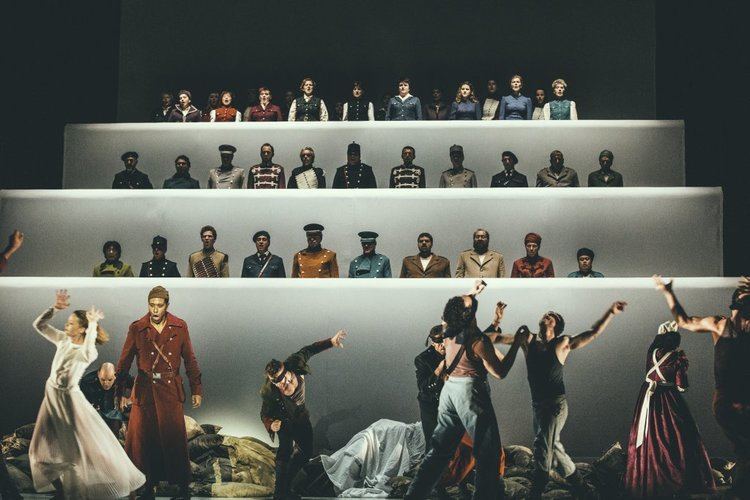First performance 24 October 2014 | Language English | |
 | ||
People also search for The Accacha Chronicles, Slow Man, Tamerlano | ||
Shell Shock is an opera by Nicholas Lens set to an English-language libretto by Nick Cave. The opera has been published by Mute Song, London.
Contents
The protagonists in this opera are besides the terrifying Angels of Death ("We drink breath") mostly the silent victims of war like the mother, the orphans, the unknown soldier, the colonial soldier, the fallen, the missing, the deserter, the survivor etc. The characters mutate into different characters and help each other in telling their individual story.
With Shell Shock it is the first time that the artist Nick Cave writes the libretto for an opera. The libretto has been described sometimes as highly explicit with in opera highly unusual text phrases like (in Canto of the Mother) 'Fuck God - Fuck the Flag'.'
First performances
Shell Shock received its world premiere on 24 October 2014. The work was commissioned and first produced by the Royal Opera House La Monnaie in Brussels. La Monnaie Symphony Orchestra and Chorus, with Konzertmeister Saténik Khourdoian, was conducted by Koen Kessels. For the first stage interpretation of this opera, the stage director and choreographer Sidi Larbi Cherkaoui, with set design and video by Eugenio Szwarcer, did use contemporary dancers of his own company Eastman, sometimes forming a heroic statue, but in general absorbing, underlining and accompanying the vocal soloist characters in their role to focus on the traumatic effects war has on individuals.
The version of this world premiere has been broadcast on the French-German Arte television.
Instrumentation
These singers perform with an orchestra consisting of 3 flutes (one doubling on piccolo, one doubling on alto flute and bass flute), two oboes (one English horn), 3 clarinets (one bass clarinet) three bassoons (one bass bassoon), two horns, three trumpets (one flugelhorn), three trombones (one bass trombone, one tuba, timpani, three percussions, harp, piano and strings. The work also requires a four-part chorus.
